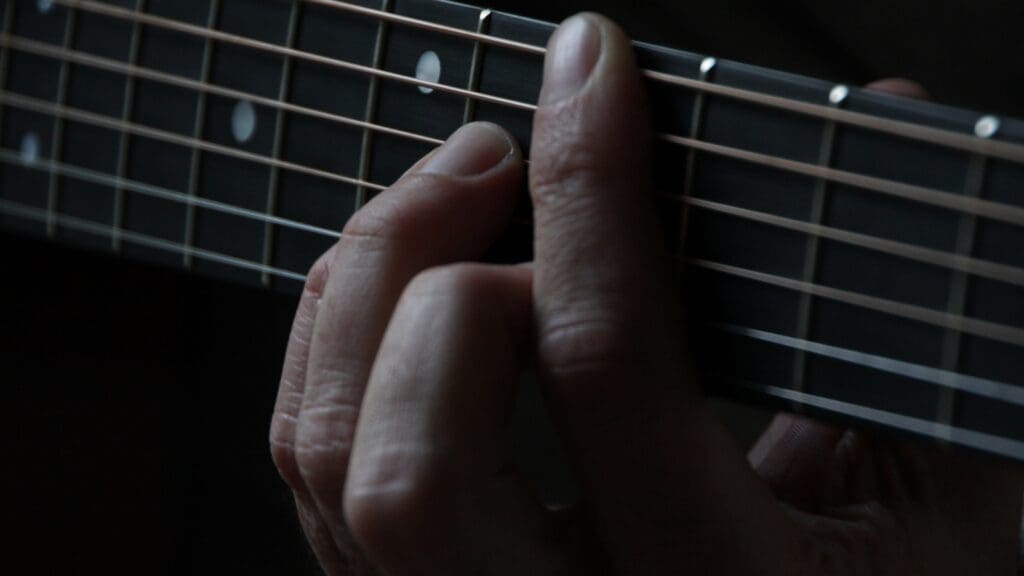
When it comes to crafting emotionally charged music, few artists can match the talent and artistry of Taylor Swift. With her ability to capture raw emotions and translate them into captivating melodies, she has won the hearts of millions around the world. In this article, we will explore Taylor Swift’s iconic song and offer instructions and tips on how to play the chords to “Mean”.
Dive into the soul-stirring world of Taylor Swift’s songwriting prowess, where each chord plays a role in painting an emotional landscape. Let’s embark on a journey of musical discovery, an expedition to unlock the emotional power hidden within the chords of Swift’s songs. This guide will not just enlighten you about the technical aspects of her music but will also provide a unique perspective into the heart and soul of her artistry.
Whether you’re a budding musician, a Swiftie, or a music enthusiast seeking a deeper understanding of musical emotion, this exploration is for you. Get ready to strike the right chord!
About Taylor Swift
Born on 13th December 1989 in Reading, Pennsylvania, Taylor Alison Swift has become one of the most influential figures in the pop and country music industry. Swift’s journey to superstardom began at a young age. With a guitar and an innate talent for songwriting, she started creating music, pouring her heart into every lyric and melody.
At 14, Swift moved to Nashville, Tennessee – the heartland of country music – to pursue her aspirations. Her determination and unyielding faith in her music landed her a record deal with Big Machine Records. Through her debut album, Swift introduced herself as a fresh voice, uniquely capable of translating teenage heartbreak and experiences into catchy, relatable songs.
Since then, her music career has been a whirlwind of chart-topping albums, record-breaking sales, and numerous awards. She has become an emblem of empowerment and resilience, her music resonating with fans across the globe. From her country roots to her transition to pop music, Swift has displayed remarkable versatility, proving her mettle as a true musical chameleon.
Her ability to write deeply personal lyrics and her keen sense of melody have set her apart from her contemporaries. Whether it’s a song about love, heartbreak, or finding oneself, Swift’s music communicates directly with her audience, creating a bond that transcends the boundaries of age, culture, and geography.
About the Song “Mean”
“Mean”, from Taylor Swift’s third studio album, 2010’s “Speak Now”, is a resonating retort to those who’ve belittled her. It’s a musical rebuttal laced with elements of bluegrass and country. Swift’s eloquent lyrics and emotive vocals render “Mean” a catchy tune and an anthem of defiance against criticisms and insults.
The chords of this song convey a narrative arc, shifting from minor to major, mirroring the transformation from victimhood to empowerment. Swift uses the G chord to set a triumphant tone, the Bm chord to express vulnerability, and the D chord to underscore the resolve in her voice.
This interplay of chords encapsulates the emotional depth of Swift’s music and the versatility of her artistry. Whether you’re a seasoned musician or a casual listener, understanding the chord progression in “Mean” can enhance your appreciation of Swift’s craft, demonstrating how she uses music as a medium for storytelling. So, let’s delve deeper into the song, explore its chords, and reveal the magic behind Swift’s musical genius.
What Are the Chords to Mean by Taylor Swift?
The chords to “Mean” by Taylor Swift are G, Bm, D, and A. They create a repetitive but powerful sequence that allows the lyrics to take centre stage and convey their message effectively.
Starting with the G chord, it serves as the song’s backbone and represents strength and determination. As Swift sings about rising above negative comments, this chord provides a solid foundation and sets the tone for her defiance.
The Bm chord, on the other hand, adds an element of vulnerability to the song. It signifies the hurt and pain caused by the words of others but also shows resilience as Swift can move past it.
Moving onto the D chord, it appears sparingly but effectively in key moments of the song. It adds a sense of urgency and determination, emphasising Swift’s message of not allowing others to bring her down.
Lastly, the A chord provides a resolution and a sense of empowerment. The final chord in the song mirrors Swift’s journey from feeling victimised to triumphing over her critics.
How To Play the Chords to Mean on Guitar

If you’re a guitarist, playing the chords to “Mean” on guitar is relatively straightforward. Here’s our quick guide on how to play each of the song’s primary chords.
Bm Chord
You’ll need to utilise the barre technique to play the Bm chord correctly. Start by placing your first finger across all strings on the second fret. Next, place your third and fourth fingers on the fourth fret of the fourth and third strings respectively.
Lastly, put your second finger on the third fret of the second string. Aim to hit all the strings, excluding the sixth, when you strum.
The Bm chord, deep and resonant, mirrors the darker undertones of the song. It might take a bit of practice to get the positioning right, especially if you’re new to barre chords. However, the rich sound it adds to the song is worth the effort, underscoring its poignant message.
A Chord
Much like a beacon of light at the end of the tunnel, the A chord denotes the victorious resolution of Swift’s narrative in “Mean”. This is one of the easiest chords to master, even for beginners.
Start by placing your first finger on the second fret of the fourth string. Your second finger goes on the second fret of the third string, and your third finger on the second fret of the second string. It’s essential to strum from the fifth string down, avoiding the sixth string.
The A chord radiates a bright, cheerful tone that reflects the empowering conclusion of the song. The simplicity of the chord doesn’t diminish its impact – in fact, its straightforwardness enhances the uplifting message of rising above adversity.
G Chord
The G chord, often seen as the grand finale in “Mean”, is a vibrant and robust chord punctuating the song’s defiant spirit.
The formation of the G chord involves placing your second finger on the third fret of the sixth string and your first finger on the second fret of the fifth string. Your third finger needs to be on the third fret of the second string, while your fourth finger goes on the third fret of the first string. When strumming, play all six strings to fully express the chord’s vibrant energy.
The G chord is an audacious proclamation of strength in the face of adversity, a fitting conclusion to the song’s narrative arc. Its resonant, full-bodied sound finalises the song’s transformation from victimhood to victory. The G chord may take some time to master, but its powerful resonance is the final piece of the puzzle in playing “Mean” with all the courage and conviction that Taylor Swift intended.
D Chord
The D chord, a staple in the music world, brings a lightness and uplift to “Mean”. To form a D chord, place your first finger on the second fret of the third string, your second finger on the second fret of the first string, and your third finger on the third fret of the second string. Strum the four strings, starting from the fourth string, to let the D chord sing in its full glory.
With its bright and buoyant tone, the D chord infuses a sense of optimism and resilience into the song. However, its simplicity does not equate to insignificance, as this chord plays an essential role in the melodic journey of “Mean”.
As with the other chords, mastering the D chord requires practice and patience. But, as you strum each note, you’ll find yourself not only playing music but also conveying the power of resilience that Taylor Swift so brilliantly embodies in this song.
Tips and Tricks for Playing the Chords to “Mean”
Now that we’ve laid out the song’s chords and the techniques you’ll need to play each of them, let’s dive into some valuable tips and tricks to help you master the chords to “Mean”.
Firstly, don’t rush. Playing quickly doesn’t necessarily mean you’re playing well. Focus on accuracy and precision. Practice the chords slowly and gradually increase your speed as you gain comfort and familiarity.
Also, maintain consistent strumming patterns. The rhythm is just as important as the notes themselves. Experiment with different strumming patterns until you find the one that resonates best with the song.
Don’t worry about making mistakes. It’s all part of the learning process! However, to minimise errors and become increase confidence, practice regularly. Consistency is key to progress. Set aside dedicated practice time each day to gradually improve your skills.
Finally, enjoy the process. Music is about expressing emotions and having fun. Don’t lose sight of the joy in your pursuit of technical proficiency. Stick to these tips, and you’ll be playing the chords to “Mean” like a pro in no time!
Final Thoughts on the Chords to “Mean”

Mastering the chords to “Mean” is not merely about understanding finger placements and strum patterns. It’s a journey of musical self-discovery and growth. Guitar playing, much like any other skill, requires a harmonious balance between patience, dedication, and passion. Each chord you learn and each strum you perfect brings you one step closer to expressing your unique musical voice.
Through exploration and mastery of “Mean”, you can capture the song’s very essence. The process may prove demanding and, at times, frustrating. Yet, it’s the very challenge that makes the journey worthwhile. Embrace the struggle, for it is by overcoming these hurdles that we truly grow as musicians.
Encourage yourself to experiment with the chords to create your own unique rendition of “Mean”. Celebrate each small victory; each note played correctly, and each chord transition made smoothly. This is not a race but a marathon, and the true joy lies not in the destination but in the journey.
Trust in the process, and most importantly, trust in yourself. With consistent practice, patience, and an unwavering belief in your abilities, you’ll not only learn to play “Mean”, but you’ll nurture a lifelong love and appreciation for music.










